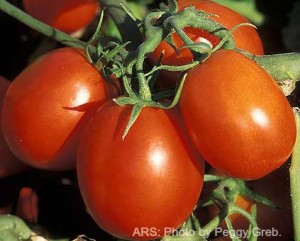After 15 multistate outbreaks of Salmonella food poisoning linked to raw tomatoes from 1973 to 2010, the Food and Drug Administration (FDA) is researching the fruit’s vulnerability to the bacteria. Twelve of those outbreaks have occurred since 2000, resulting in almost 2,000 illnesses and three deaths.
 Dr. Eric Brown, director of FDA’s Division of Microbiology said, “the conditions in which tomatoes thrive are also the conditions in which Salmonella thrive. But the tomato always presented an extra challenge because it is so short-lived. By the time it looked like contaminated tomatoes could be causing illnesses, the harvest would be gone.”
Dr. Eric Brown, director of FDA’s Division of Microbiology said, “the conditions in which tomatoes thrive are also the conditions in which Salmonella thrive. But the tomato always presented an extra challenge because it is so short-lived. By the time it looked like contaminated tomatoes could be causing illnesses, the harvest would be gone.”
Government scientists are trying to figure out how to reduce contamination early in tomato production. What can be done to prevent contamination from occurring in the first place? Researchers found that a bacterium canned Paenibacillus in the soil is harmless to people but kills Salmonella bacteria. But since farmers routinely fumigate six inches into the soil to kill bacteria, the helpful bacteria are destroyed, which creates more opportunities for Salmonella to colonize in the tomato plant roots.
Scientists have also discovered that the quality of water used to irrigate tomatoes is a key factor in whether the fruit is contaminated with Salmonella. Proximity of the tomato fields to poultry farms is another factor, since poultry is a potential source of the pathogenic bacteria. Finally, the scientists are studying Salmonella genes to find faster ways to identify pathogenic bacteria contaminating produce and track down the source of a foodborne illness outbreak.
This research is shared with industry and agricultural extension outlets at the state level. Growers can learn this information that can help them prevent contamination. In addition, the Produce Safety Rule, part of the Food Safety Modernization Act (FSMA), is establishing science-based standards for production and harvest of fruits and vegetables. FSMA gives the FDA a mandate to create and monitor a system that emphasizes public health and prevention of risk.




